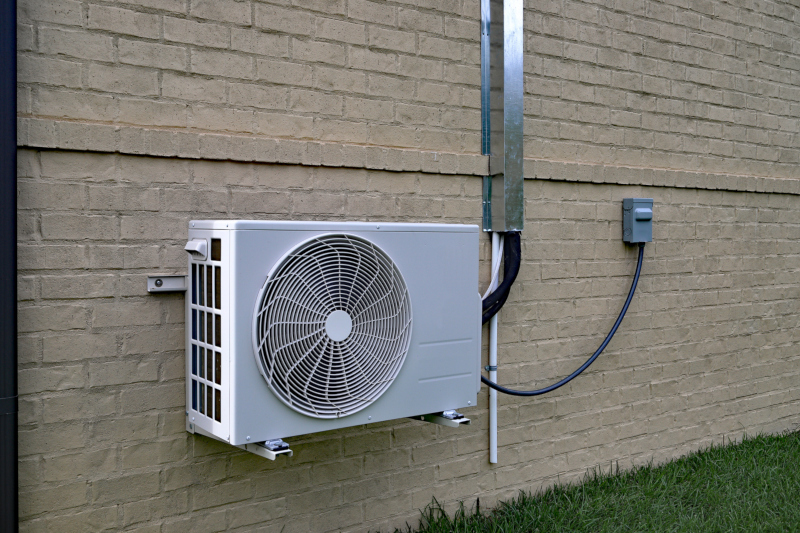Keeping warm is getting very expensive.
December was the coldest in the Bay Area in 30 years. January rainstorms, followed by freezing temperatures, are bringing more cold weather in February. PG&E warns that consumers should expect their bills to be 32% higher than last year. Natural gas bills alone are five times higher in California than benchmark prices in the U.S., according to ABC 7 News. All this has some people searching for a sane alternative to their old, forced-air, gas-burning heating system.
Are Heat Pumps an Option?
Heat pumps seem to be at the top of the list. They are an energy-efficient alternative to conventional furnaces and air conditioners. In fact, they are an all-in-one electric appliance that can replace both a traditional air conditioner and home heating system. They don’t burn fossil fuels. They rely on electricity to transfer heat from one space to another. Heat pumps offer more versatility in creating comfort indoors. They are designed to provide heat in winter, while also acting as air conditioners in summer. There are different models to consider before making a switch.
Ducted Air-Source Heat Pumps
Three basic types of heat pumps requiring ducts are: air-to air, geothermal and water source. Each collects heat either from the air, the ground or water outside your house and concentrates it for circulating inside.
An air-source heat pump, when installed properly, is capable of delivering as much as three times more heat energy to a home, in comparison to the electrical energy it consumes. Larger packaged systems have both the coil and fan outdoors. They can heat an entire house, utilizing an already-existing system of ducts if you are replacing an older forced air furnace.
Ductless, Mini-Split-System Heat Pumps
This system also has two main components, the indoor air-handling unit, and an outdoor compressor/condenser. A conduit links the outdoor and indoor units. Also, there is a reverse cycle chiller that uses water to generate heat and cold water instead of air, which can be used with radiant floor heating systems in heating mode. This is good news for Eichler and Alliance homeowners in Marin. These smaller units are often used for additions or accessory dwelling units (ADUs), especially where ducts are not feasible.
Absorption Heat Pumps
Absorption heat pumps are relatively new for residential systems. They are sometimes called gas-fired heat pumps. These pumps use thermal energy or heat and can use a variety of heat sources like air or geothermal-heated water, steam, solar-heated water and natural gas. They’ve been used mainly in commercial buildings, as the units themselves are much larger than other heat pumps. They are becoming more popular in homes of 4,000 or 5,000 sq. ft., or larger.
Geothermal Heat Pumps
These systems cost more to install but are more efficient at transferring heat between the ground or nearby water source and the home. These pumps also have lower operating costs.
In-floor Radiant Heating?
These radiant heating systems are easiest to install when a home is being built, or when you are redoing your flooring. They were a staple in Eichler and Alliance homes, as the tubing or mesh is embedded in the top layer of the concrete slab. Now, the systems use longer-lasting material. The systems use either an electric cable mesh or heated water pumped through under-floor tubing. In either case, the heat is distributed evenly, from the floor up, and no heat is lost though ducts, so they are efficient.
What about Baseboard Heaters?
Another consideration for home heating are baseboard heaters. Depending on your needs, you can choose a water or oil baseboard heater, or one that is electric. Marin residents living in Eichler homes have sometimes turned to baseboard heaters when their in-floor radiant heating systems failed. In-floor systems are expensive to repair. This is because they are embedded in a concrete slab. Electric baseboard heaters are an easy and inexpensive alternative to repairing the in-floor system or trying to install a forced-air heating system in a home with little or no room for ducts.
Another advantage is that baseboard heaters can operate in zones. Different rooms in your home can operate on their own thermostat. If the rooms are small, it might be a good choice. But if the home has high ceilings with a large open format design, baseboard heaters fall short. This is because their output is limited, heating the air nearby, but not efficiently in large spaces.
How Does a Traditional Radiator System Stack Up?
If you’ve ever been in a much older home or building – think old Victorian homes and old schoolhouses – you’ll recall the standard radiator. Phased out of most homes, they still exist and have held up over time with proper maintenance. And modern versions are much less clunky looking.
They use a boiler that heats water to boiling which creates steam that runs through pipes to radiators located in different rooms throughout a house. The water in the boiler or tank may be heated, much like a hot-water heater, by gas, oil, propane or electricity. But instead of distributing water, it distributes steam. This system is much quieter and cleaner than a forced-air system, but it isn’t as efficient. It takes longer to heat up and it doesn’t possess the power of a furnace blowing hot air.
If you feel confused about what heating system might be right for your home, it is wise to speak with a professional. We haven’t covered all the choices here, and new options are being discovered in the fight against climate change. Also, in a couple of weeks, we’ll share details about the Inflation Reduction Act (IRA). Rebates and tax incentives are meant to help you and your family go electric. Be sure you look for rebate options and ask about tax incentives before making a purchase.
Spring is a great time to get started on remodeling projects. If you have a project in mind and want to flesh out the details, we’d love to see if we are a good match for your project needs.



